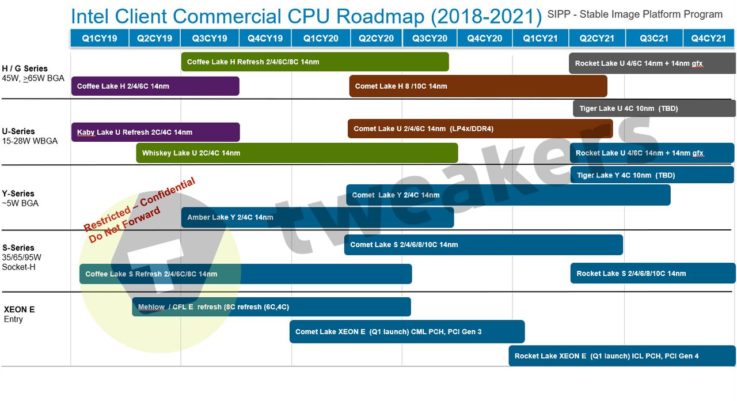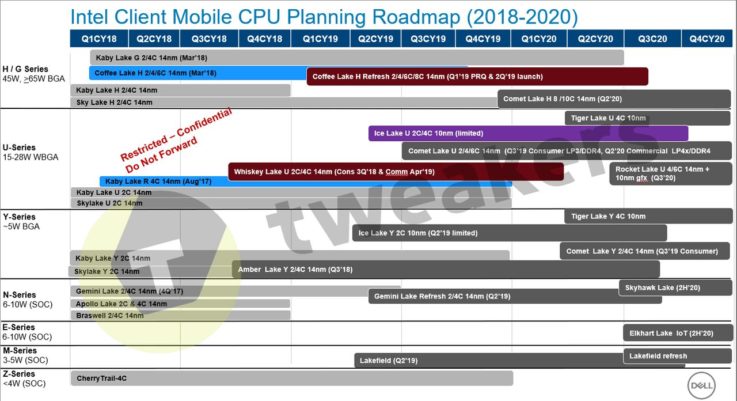
A leaked Intel roadmap shows that there should be no 10nm processors for the desktop until at least 2022. In addition, there is a maximum of 10 cores.
Further problems with 10nm at Intel
Intel still seems to have massive problems with the 10nm production. After the company had announced that it would not launch any large-scale 10nm processors in 2018, it should be ready for the 2019 holiday season. Later leaks indicated that there will probably be no 10nm processors in 2020 either.
Intel has apparently massive problems with the manufacturing process. The new structural width was originally to be introduced as early as 2015, but since then the company has repeatedly postponed the introduction. Only very small series with 10nm processors have existed so far. In addition, the order situation for 14nm is very good. Among other things Apple has the modems of the current iPhones produced by Intel in 14nm. This also repeatedly led to production bottlenecks, which forced the world’s largest chip manufacturer to convert even a part of the already finished 10nm production back to 14nm. All this ensures that Intel simply cannot start with the 10nm production. For the desktop, there even seem to be no processors until 2022, as a leak shows.
No desktop processors with 10nm until 2022
Once again, an Intel roadmap has made it to the public. The website Tweakers.net has leaked the presentation slide apparently created for the Intel Stable Image Platform Program. There are some details to be found, which again indicate a delay of 10nm. Thus 10nm is not even mentioned in the desktop area. Instead, the generations Comet Lake and Rocket Lake are supposed to help. According to the roadmap, Comet Lake starts in the second quarter of 2020, which will be replaced by Rocket Lake a year later. Both generations continue to come with the 14nm structure width. Both Comet Lake and Rocket Lake are expected to enter the H, G and U series and the Xeon CPUs.
Only the Tiger Lake architecture will bring the first 10nm CPUs to the market in 2020. With the series U and Y quad cores with the smaller structure width are coming. This shows that Intel is probably not planning any desktop CPU with a 10nm structure width until 2022.
10 cores for desktops and notebooks
Another change of the already more than heavily used 14nm process is only the number of cores. While AMD can offer Ryzen 3000 with up to 16 cores this year, there are a maximum of 10 cores for Intel’s desktop area. These will be available for the first time with Comet Lake in the second quarter of 2020. The H series will also get up to 10 cores. This would also allow high-performance notebooks to benefit from more cores. In the U series for ultrabooks, on the other hand, up to 6 cores should be possible with Comet Lake. Rocket Lake will be the refresh of the Comet Lake series from 2021 and offers the same number of cores, but is only planned for the desktop as well as the U and G series.
The roadmaps look extremely authentic, but as always there is a residual risk that they are fakes, false or simply old information. Realistically, however, there is some truth to this. The future will show how Intel and the almost endless 14nm generation will continue.



What about the switch to 7nm, could Intel just move to 7nm in those 2021-2022 desktop CPUs? Everyone is thinking they will be 10nm, where as Intel could have 7nm ready to roll. Bait and switch if you will…